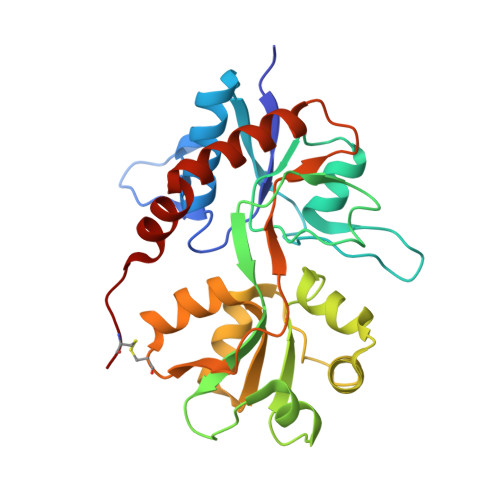Molecular Recognition of Two 2,4-syn-Functionalized (S)-Glutamate Analogues by the Kainate Receptor GluK3 Ligand Binding Domain.
Venskutonyte, R., Larsen, A.P., Frydenvang, K., Gajhede, M., Sagot, E., Assaf, Z., Gefflaut, T., Pickering, D.S., Bunch, L., Kastrup, J.S.(2014) ChemMedChem 9: 2254-2259
- PubMed: 25044437
- DOI: https://doi.org/10.1002/cmdc.201402204
- Primary Citation of Related Structures:
4NWC, 4NWD - PubMed Abstract:
The kainate receptors are the least studied subfamily of ionotropic glutamate receptors. These receptors are thought to have a neuromodulatory role and have been associated with a variety of disorders in the central nervous system. This makes kainate receptors interesting potential drug targets. Today, structures of the ligand binding domain (LBD) of the kainate receptor GluK3 are only known in complex with the endogenous agonist glutamate, the natural product kainate, and two synthetic agonists. Herein we report structures of GluK3 LBD in complex with two 2,4-syn-functionalized (S)-glutamate analogues to investigate their structural potential as chemical scaffolds. Similar binding affinities at GluK3 were determined for the 2-(methylcarbamoyl)ethyl analogue (Ki =4.0 μM) and the 2-(methoxycarbonyl)ethyl analogue (Ki =1.7 μM), in agreement with the similar positioning of the compounds within the binding pocket. As the binding affinity is similar to that of glutamate, this type of Cγ substituent could be used as a scaffold for introduction of even larger substituents reaching into unexplored binding site regions to achieve subtype selectivity.
- Department of Drug Design & Pharmacology, Faculty of Health & Medical Sciences, University of Copenhagen, 2100 Copenhagen (Denmark).
Organizational Affiliation:



















